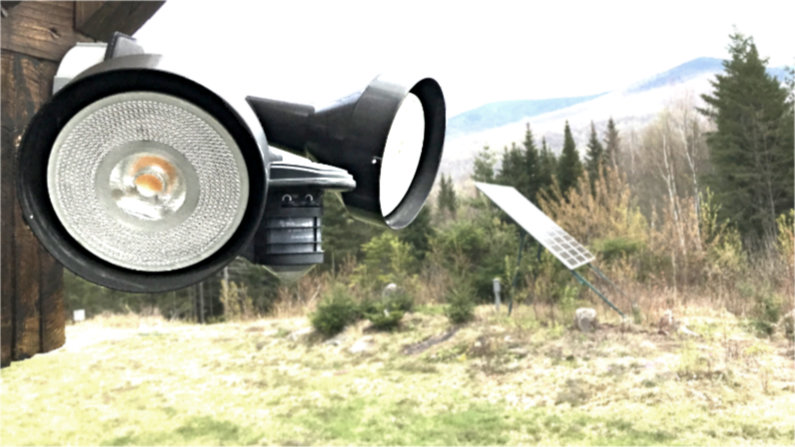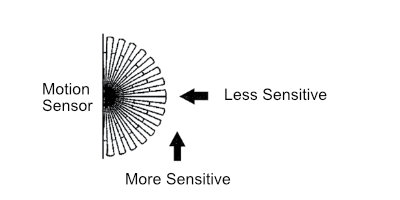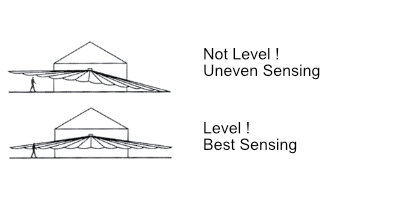The Best Way To Set Up Outdoor Motion Lights

Motion Sensor Pattern and Alignment

First, you must understand that the sensor on motion lights work best when movement occurs across the field of view rather than towards it.
It WILL work when moving towards the motion sensor however the movement will need to be closer in order to trigger the sensor.
Ideally you will want to install the motion light in a location that will trigger best for movement across it. This is not always possible, but if you understand the principle then it will help you decide where best to put it.
I will interject here and recommend a particular motion sensor light that has an approximate 60 foot range and is ‘the best there is’ for home security outdoor motion sensor lighting. I’ve written several articles on this product. Here’s one:
Best Outdoor Motion Lights For Home Security
Tip: Do you see those lobes in the diagram above? Well, if your motion sensor is mounted above a pathway (objects move towards the sensor) and you feel that there’s a sensitivity issue (even after turning up the sensor gain), try moving the sensor head about 1/4″ one way or the other – just a little bit. Why? Because maybe the pathway happens to be slightly in-between one of those sensing lobes.
Motion Sensor Level

Look at the image above. If the motion sensor is not level with the ground, then sensing will be uneven. Both sides of the pattern will have poor sensing because one end will be looking high while the other is looking low.
Mount the sensor head so that it is level with the ground.
Motion Sensor Mounting Height
It’s best to mount the sensor between 6 and 10 feet off the ground.
Below 6 feet and above 10 feet you will lose sensing range on the ground.
Ideally, in my experience, I mount my motion light sensors at least 8 feet high, though I find the sweet spot to be about 9 feet for maximum range while not giving up nearby range.
When mounting higher up, the motion light will still work. But you will have to point / aim the sensor down towards the area of interest. You just won’t get as much range (which may not be an issue for you, depending).
A good thing about mounting higher is better security for the motion light – keeping it out of reach from the ground. 9 feet is pretty safe for that.
Sensor vs. Light Fixture Position

The orientation of the motion light mounting plate should position the light fixture ABOVE the sensor head.
Why? Because heat rises, and the radiated heat from the light will not interfere with the sensor (which could keep it turned on).
Note: The sensor works by Infrared (heat waves).
Walk the Motion Sensor Perimeter

The RAB Stealth (and some other motion lights) have a TEST mode.
Switching to TEST mode will operate the motion light whether it’s day or night, turning on the light for a few seconds when motion is detected – then off again. This makes it convenient for testing and adjustments.
Start outside the pattern and walk ACROSS the sensing perimeter to discover the extent of the pattern.
Note, as distance from the sensor increases, it will take more
movement to be detected.
Make adjustments to the sensor range gain and physical alignment to optimize.
Home security and outdoor motion lights go hand in hand. I do not go ‘cheap’ when it comes to home security. I have no doubt whatsoever that the following product is the best there is in this category:
Continue reading: LED Flood Light Replacement for Motion Lights
